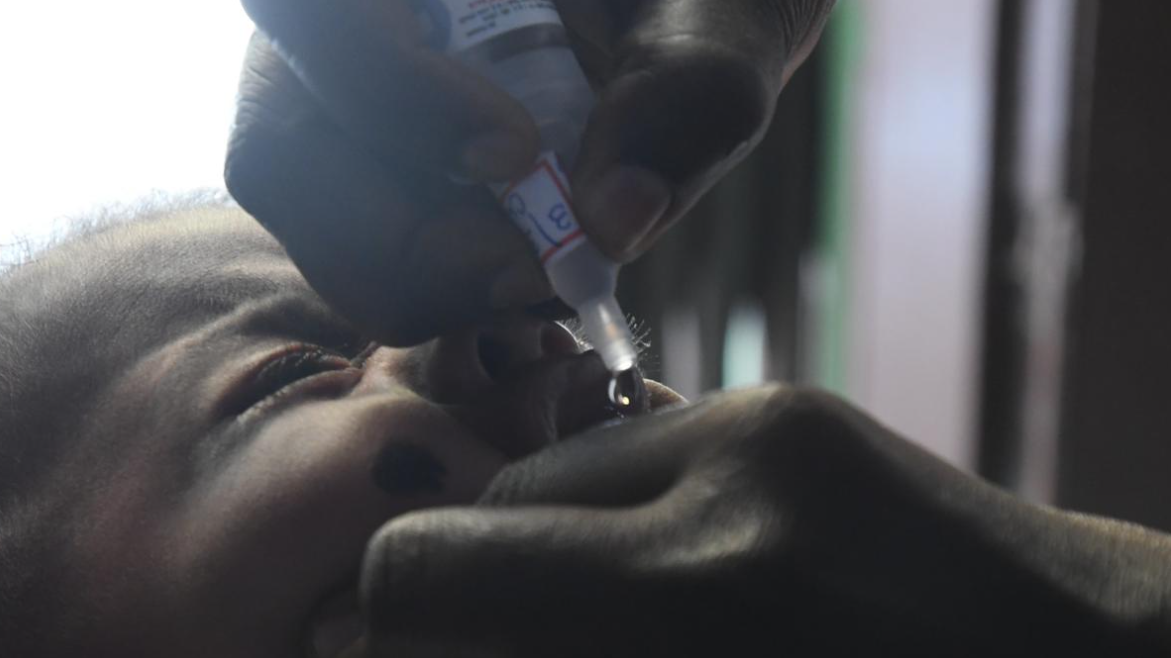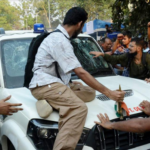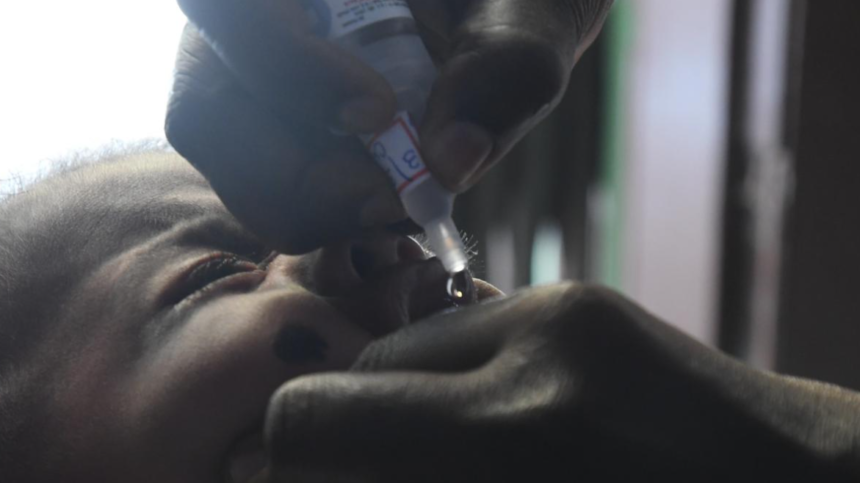Introduction
WHO Investigates, has launched an investigation into a suspected new strain of polio detected in Meghalaya, India. The case involves a two-year-old child from Tikrikilla, a remote area in the state, who has been diagnosed with vaccine-derived polio. The Union Home Ministry confirmed the case on Tuesday, August 20, 2024, sparking concerns over the emergence of a new strain and the implications it could have for global polio eradication efforts. This article delves into the details of the case, the nature of vaccine-derived polio, the response from the health authorities, and the potential impact on public health initiatives.
Background: The Global Fight Against Polio
Polio, or poliomyelitis, is a highly infectious disease caused by the poliovirus. It primarily affects young children and can lead to permanent paralysis. The global effort to eradicate polio has been ongoing for decades, with significant progress made in reducing the number of cases worldwide. Thanks to widespread immunization campaigns, wild poliovirus cases have been reduced by over 99% since 1988. However, the fight against polio is not yet over, as vaccine-derived polio and pockets of wild poliovirus continue to pose challenges.
Vaccine-Derived Polio: Understanding the Phenomenon
Vaccine-derived poliovirus (VDPV) is a rare but well-documented phenomenon. It occurs when the weakened virus in the oral polio vaccine (OPV) circulates in under-immunized populations, mutating and regaining the ability to cause disease. While OPV is highly effective in preventing polio, in rare instances, the virus can spread in communities with low vaccination coverage, leading to outbreaks of vaccine-derived polio.
Vaccine-derived polio is a significant concern in regions with poor sanitation, low immunization rates, and inadequate healthcare infrastructure. These conditions create an environment where the mutated virus can thrive and spread. Although VDPV cases are rare compared to wild poliovirus cases, they underscore the need for continued vigilance in polio eradication efforts.
The Meghalaya Case: Details and Initial Response
The case of the two-year-old child in Tikrikilla, Meghalaya, has raised alarms among health officials. According to reports, the child developed symptoms consistent with polio, including fever, fatigue, headache, vomiting, and limb weakness. Laboratory tests confirmed the presence of a poliovirus strain that closely resembles the vaccine strain, indicating a case of vaccine-derived polio.
Health Authorities’ Response
Upon confirmation of the case, the Meghalaya Health Minister immediately notified the WHO and the Union Ministry of Health and Family Welfare. A team of experts from the WHO, the Indian Council of Medical Research (ICMR), and the National Polio Surveillance Project (NPSP) was dispatched to Tikrikilla to conduct an in-depth investigation. The team is currently assessing the child’s medical history, vaccination status, and the local community’s immunization coverage.
In response to the case, the Meghalaya government has launched an emergency vaccination campaign in Tikrikilla and surrounding areas. The campaign aims to vaccinate all children under the age of five, regardless of their previous vaccination status, to prevent further spread of the virus. The state government has also ramped up surveillance efforts, increasing the monitoring of acute flaccid paralysis (AFP) cases and collecting environmental samples to detect the presence of poliovirus in the community.
Public Health Concerns
The emergence of a vaccine-derived polio case in Meghalaya has reignited concerns about the risks associated with the oral polio vaccine and the challenges of eradicating polio in hard-to-reach and underserved populations. Public health experts emphasize that while OPV has been instrumental in reducing polio cases globally, its use in areas with low vaccination coverage requires careful monitoring and robust immunization strategies.
The Meghalaya case also highlights the need for sustained efforts to improve healthcare access in remote and marginalized communities. Ensuring high immunization coverage, improving sanitation, and strengthening healthcare infrastructure are crucial steps in preventing the spread of vaccine-derived poliovirus and other infectious diseases.
The Role of WHO and Global Health Agencies
The WHO has played a central role in coordinating global efforts to eradicate polio. Through initiatives such as the Global Polio Eradication Initiative (GPEI), the WHO works with governments, non-governmental organizations, and international partners to support vaccination campaigns, surveillance, and outbreak response. The investigation into the suspected new strain of polio in Meghalaya is part of the WHO’s ongoing commitment to detecting and responding to potential threats to polio eradication.
Investigation Process
The WHO’s investigation into the Meghalaya case involves several key steps. First, the organization will analyze the genetic sequence of the poliovirus strain identified in the child to determine whether it represents a new variant of VDPV or a known strain. Genetic sequencing allows scientists to trace the virus’s origin and understand how it has mutated over time.
The WHO will also assess the vaccination coverage in the affected area and identify potential gaps in immunization that may have contributed to the emergence of VDPV. This assessment will help inform strategies to increase vaccination coverage and prevent further cases.
In addition, the WHO and its partners will work with local health authorities to implement enhanced surveillance measures, including environmental sampling and community outreach, to detect and contain any further spread of the virus.
Global Implications
The emergence of a suspected new strain of polio in Meghalaya could have significant implications for global polio eradication efforts. If confirmed, this case could signal the need for adjustments to vaccination strategies, particularly in regions with low immunization coverage. The WHO and its partners may need to consider expanding the use of the inactivated polio vaccine (IPV), which does not carry the same risk of vaccine-derived poliovirus as OPV.
The case also underscores the importance of maintaining high levels of immunization coverage even in areas where polio has been largely eradicated. The risk of vaccine-derived polio persists as long as there are pockets of under-immunized populations, and complacency in vaccination efforts could undermine decades of progress in the fight against polio.
The Challenges of Polio Eradication in India
India’s battle against polio has been a long and arduous journey. Once considered the epicenter of polio transmission, India achieved a major milestone in 2014 when it was declared polio-free by the WHO. This achievement was the result of intensive vaccination campaigns, strong political commitment, and widespread public awareness efforts. 
Continued Vigilance Required
Despite being polio-free for nearly a decade, India remains vigilant in its efforts to prevent a resurgence of the disease. The emergence of vaccine-derived polio in Meghalaya is a stark reminder that the fight against polio is not over. India’s vast and diverse population, coupled with disparities in healthcare access and immunization coverage, means that the country must remain on high alert for any signs of polio.
The challenges of eradicating polio in India are compounded by factors such as population density, migration, and socio-economic disparities. In remote and marginalized communities like Tikrikilla, access to healthcare services, including routine immunization, can be limited. These challenges require targeted interventions and sustained efforts to reach every child with life-saving vaccines.
The Role of IPV in India’s Immunization Strategy
In recent years, India has increasingly incorporated the inactivated polio vaccine (IPV) into its immunization schedule as part of a global strategy to phase out OPV and prevent vaccine-derived polio. IPV is given as an injection and contains a killed version of the poliovirus, which cannot cause vaccine-derived polio. The introduction of IPV is intended to provide immunity against polio without the risk of circulating vaccine-derived strains.
However, the transition from OPV to IPV presents logistical and financial challenges, particularly in resource-limited settings. IPV is more expensive and requires trained healthcare workers to administer it, unlike OPV, which can be given orally. Ensuring widespread coverage with IPV requires strong healthcare systems, adequate funding, and effective public health messaging.
Addressing Misinformation and Vaccine Hesitancy
One of the significant challenges in India’s polio eradication efforts has been addressing misinformation and vaccine hesitancy. In some communities, misconceptions about vaccines, fueled by rumors and misinformation, have led to resistance to immunization. This resistance can create gaps in vaccination coverage, allowing vaccine-derived poliovirus to circulate.
Public health officials in India have undertaken extensive efforts to combat misinformation and build trust in vaccines. Community engagement, partnerships with local leaders, and culturally sensitive communication strategies are essential in overcoming vaccine hesitancy and ensuring that every child receives the full course of polio vaccinations.
Potential Impact on Global Health Initiatives
The case of suspected vaccine-derived polio in Meghalaya has the potential to impact global health initiatives beyond polio eradication. The principles and lessons learned from polio eradication efforts, such as the importance of surveillance, rapid response, and community engagement, are applicable to a wide range of infectious disease control efforts.
Strengthening Health Systems
The experience of polio eradication has highlighted the need for strong and resilient health systems that can respond effectively to outbreaks and public health emergencies. Investment in healthcare infrastructure, workforce training, and supply chain management is crucial in building systems that can prevent and control infectious diseases.
In addition, the integration of polio surveillance and immunization efforts with broader public health initiatives can enhance the overall effectiveness of disease prevention programs. For example, polio immunization campaigns can be used as an opportunity to deliver other essential health services, such as routine immunizations, maternal and child health care, and nutrition support.
The Role of International Cooperation
The fight against polio has demonstrated the power of international cooperation in achieving public health goals. The global polio eradication initiative has brought together governments, international organizations, non-governmental organizations, and communities in a coordinated effort to eliminate a devastating disease.
As the world continues to grapple with emerging infectious diseases and health challenges, the model of international cooperation developed for polio eradication can serve as a blueprint for future public health initiatives. Collaboration across borders, sharing of resources and expertise, and a commitment to equity in healthcare are essential in addressing global health threats.
Conclusion
The suspected new strain of polio in Meghalaya has reignited concerns about the challenges of eradicating polio and the risks associated with vaccine-derived poliovirus. The case highlights the need for continued vigilance, robust immunization efforts, and targeted interventions in underserved communities. The WHO’s investigation and the response from Indian health authorities will be crucial in containing the virus and preventing further cases.
The global fight against polio has made significant progress, but the emergence of vaccine-derived polio cases underscores the need for sustained efforts and international cooperation. The lessons learned from polio eradication can inform broader public health initiatives and strengthen health systems worldwide. As the world strives to achieve a polio-free future, the case in Meghalaya serves as a reminder that the battle against polio is not yet won, and continued vigilance is essential to safeguarding the health of future generations. ALSO READ:- Sheikh Hasina Faces 33 Cases, Including Murder Charges, After Ouster from Bangladesh: A Complex Political Battle





